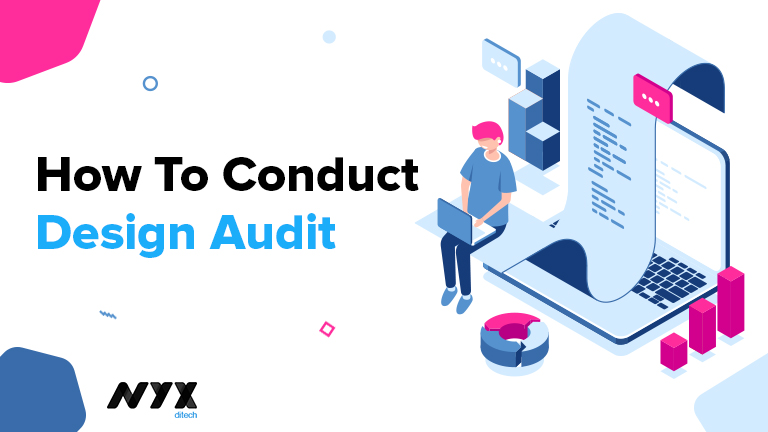What Is A Design Audit And How To Conduct It?

The purpose of design is to facilitate interaction. And, this generates the need of Design Audit. This interaction comes in all shapes and sizes. It can range from a purchase on an E-commerce website, a download on a content sharing application or a seamless money transfer via a banking app. Each interaction fulfils some inherent need in a user’s life, and validates the existence of a product or service in today’s digital world.
While there are many intuitive metrics to validate when successful design wins over users, it’s not very easy to figure out where design fails. A Website Audit is a crucial part of the design evaluation and structuring process. Think of it as a product check-up. It’s performed to make sure that the product is expressing itself consistently across all channels.
What is a Design Audit?
A design audit is an enquiry into the user architecture and execution for any website or mobile application to yield actionable business insights. The design audit mechanism can reveal whether the business is achieving the set goal for conversion and if there is a shortfall and by how much.
Here are some broad areas of auditing:
Web Design and UX
A page structure must be easy to distinguish – headers, titles (H1-H6), footers, content help a user navigate a page. If possible, consider using design breadcrumbs and footer links. Use heat maps to see if your website’s visitors click the footer’s links first. Content density must not repulse a visitor, it should be divided by headings, pictures and white space.
Design leads the visitor to CTA links and buttons. CTAs should be placed within the first half of a user’s screen. The web design must align with the company’s brand. It is also important to check if the website renders well on all devices like desktops, mobiles, tablets, etc.
Lead Generation
The lead generation process follows the design and UX. The design must help to convert visitors into leads. As already stated, a page must have a clear call-to-action (CTA) block. There shoudn’t be more than 3 calls to action. CTAs should be visible and reachable for users. If website visitors change their mind and leave a particular CTA unfinished you should give them another opportunity to think upon it or doubt their action. You can show them a pop-up offering a free consultation / a knowledge base to get into details / asking a reason for leaving.
The pop-up is a rather tricky method of communicating with users, but wisely used – it works. Learn what annoys the website’s visitors, when it’s appropriate to show the pop-up, how much time should pass before the pop-up is shown, etc.
Content
The content should always adheres to the overall page goal. If it is a contact page, the content must stick to the ways users can contact you. It’s a very obvious, yet a very common mistake. Content must be logically structured and should not confuse users. The famous “Inverted Pyramid” approach by Jakob Nielsen’s is the best approach to structure the content. Place the most important info first, then proceed with supporting details, and only after that add related information.
One must also adhere to the language basics; no spelling and grammar mistakes, and no unnecessary content. Likewise, you should pay attention to content structure and how it’s divided; in blocks, bullets, white space, and illustrative pictures. Content improvement also facilitates the execution of the mail goal, which is CTAs being clicked or completed.
SEO
A search engine optimization part makes your content visible to a wider audience. Without specific terms, there are many technical operations you can do so that your content is found by more and more people. Some changes, like editing headings and the content, and inserting links can be implemented without the supervision of an expert, but advanced actions require the help of a specialist.
Set up a correct tracking tool to track what’s going on with your website in terms of traffic, keywords, entry pages, exit pages, etc. Put appropriate title tags, description tags, image tags, and meta tags. Don’t forget to use keywords and their synonyms in the headings and the main text.
Eliminate broken links on your website.Make sure your content doesn’t have references to other sources at the very beginning. This way readers won’t leave your website too soon for Google Analytics or other tools to count it as a bounce and lower a website’s ranking in search. Think about using internal links on your website. Such internal links must help users to continue their journey. If those links are inserted automatically, with the help of a bot, for example, Google can punish you.
Website Maintenance
Website speed and performance is very important to users. You must check if your website load in time? All researchers agree that the optimal load time is from 1.5 to 3 seconds. People don’t wait, and you will lose not only users but also potential customers. Google Search Engine considers website speed in their search rating, so you must take the website optimization into account.
Check the loading speed of the website and images. Enable the data caching; Drupal has a page caching feature in its core. Review the relevance of the codebase and the PHP version. You should track errors through Google Analytics. Check the functionality of the site as frequently as the website is updated.
A design audit can prove to be a very useful endeavour. Think of it as similar to getting an expert review of your website design to maximise your business conversion and increase user engagement. Want to conduct a website audit or discuss more about it. Talk to our experts.
Read more about UX mistakes for your brand here

